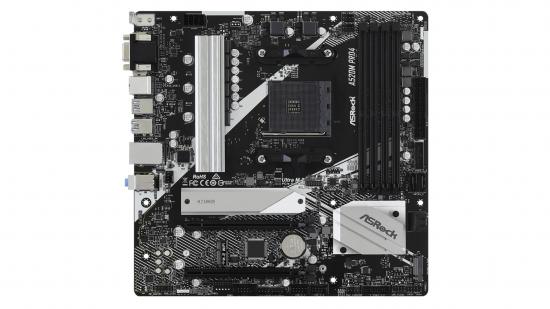AMD’s Ryzen 4000-series APUs are here and, according to AMD, are expected to hit the DIY desktop PC building market at some point soon. Its Ryzen 3000-series processor lineup also still hosts some of the best gaming CPUs around today – plenty of reasons to get your hands on a current-gen, Zen 2 CPU, then. And if you want to get one of these processors up and running on a budget, AMD has recently announced just the chipset for it.
The new AMD A520 chipset, already showing up as part of some of the biggest vendors’ motherboard designs, provides a venerable option for those who want to use a current-gen AMD processor with the option of upgrading down the line. This is because these motherboards are guaranteed to be compatible with next-gen Zen 3 CPUs straight out of the box (without motherboard manufacturers’ discretionary BIOS updates).
Apart from its obvious future-proofing benefits, “the AMD A520 chipset provides a streamlined, trusted platform with plenty of connectivity and bandwidth options to satisfy demanding home and office users,” the company says. What, specifically, does the platform offer, though?
AMD provides some specification highlights to give us an idea:
- 26 usable PCIe 3.0 lanes with a 3rd Gen AMD Ryzen processor
- Up to six USB 3.2 Gen 2 ports (SuperSpeed 10Gbps)
- Up to two native USB 3.1 ports
- Up to six native USB 2.0 ports
- Up to four SATA ports
Let’s compare this to the current-gen mainstream AMD chipset, the B550, which was released a few months ago. The B550 chipset offers 20 PCIe 4.0 lanes, up to 10 PCIe 3.0 lanes, up to six USB 3.2 Gen 2 ports, up to two USB 3.2 Gen 1 ports, up to six USB 2.0 ports, up to eight SATA ports, and overclocking support.
It’s important to remember that many of these specs are maximum ones – motherboard manufacturers could, for instance, decide to create a B550 motherboard with only two out of the maximum eight SATA ports. So the difference lies in the chipsets’ capabilities, not necessarily their actualities.
The most noticeable differences with AMD’s new A520 chipset are its lack of PCIe 4.0 capability and fewer PCIe lanes. PCIe 4.0 is usually thought of as a hallmark of AMD 500-series motherboards – something that Intel boards don’t currently offer. But removing PCIe 4.0 from the mix on A520 boards is a great way to cut costs and lower the price of the budget board, not least because even the best graphics cards and the best SSDs can’t yet fully utilise the theoretically high speed and bandwidth of the PCIe 4.0 interconnect standard.
For the moment, PCIe 4.0 is more of a means of future-proofing your system, but for those looking for a budget chipset that will be compatible with AMD Ryzen 4000-series CPUs straight out of the box, an AMD A520 board might make the perfect choice despite it only offering PCIe 3.0.
The pictured image is the ASRock A520M Pro4 motherboard.
